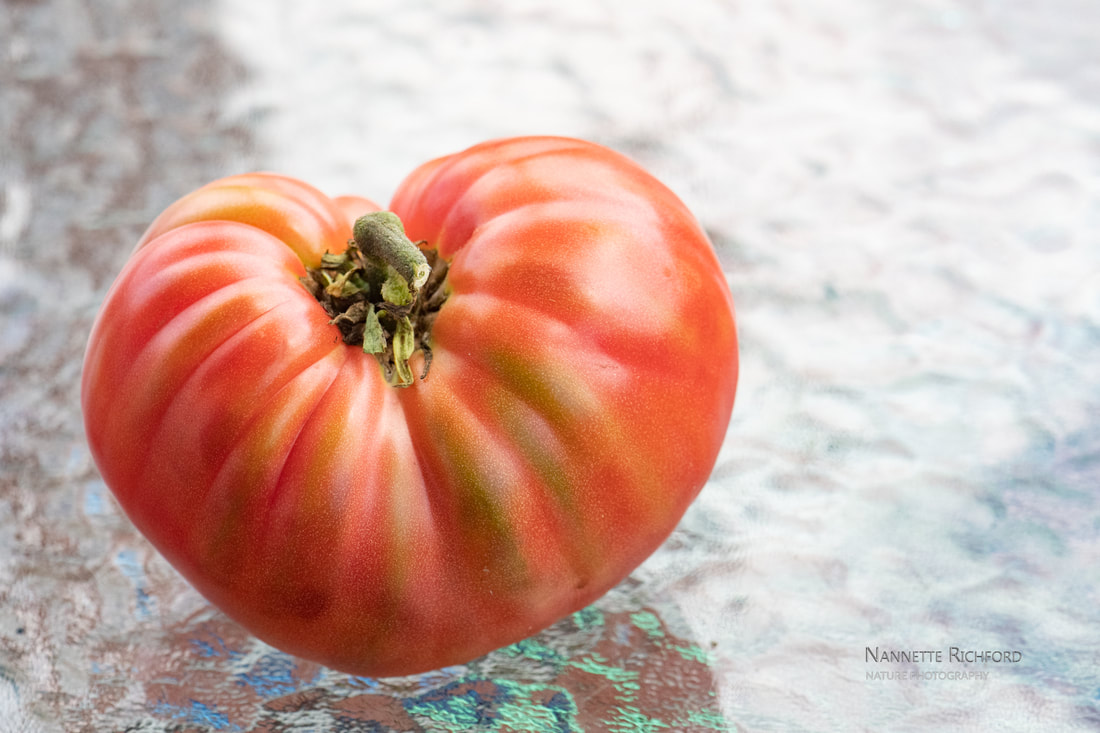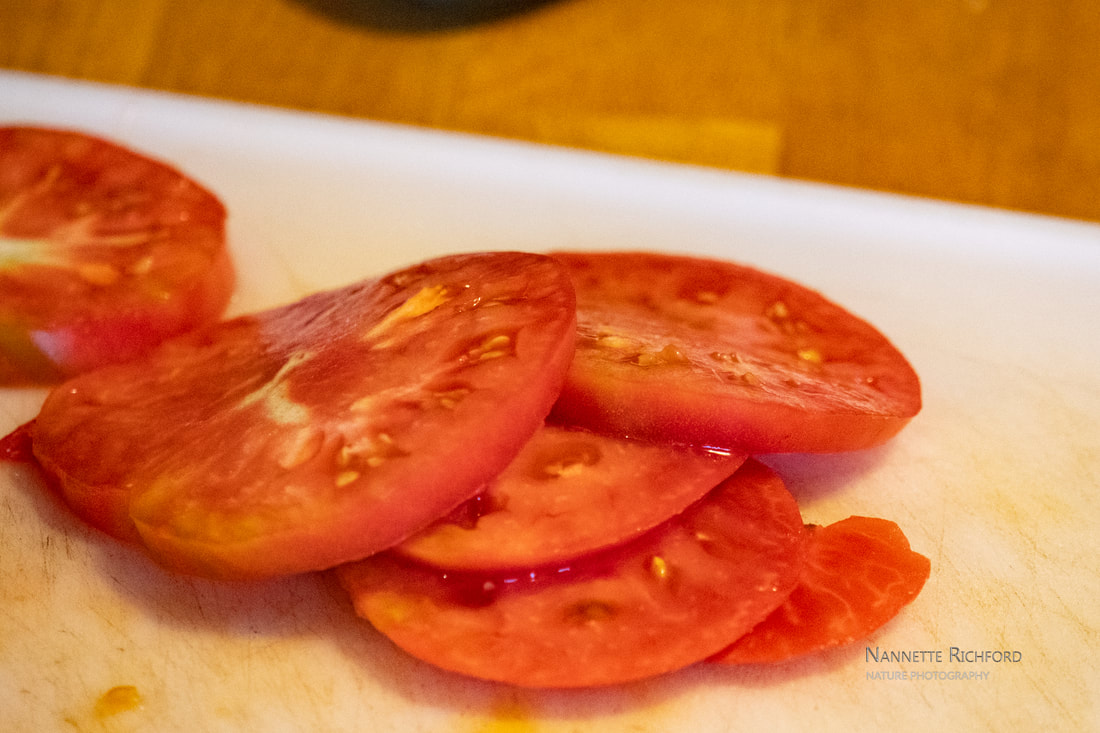- Home
- Garden Thyme Blog
- Themes
- Flowers
-
Veggies
-
Warm Season Vegetables
>
- About Beans >
- About Corn >
- Cucumbers >
- Melons
- Peppers >
- Squash >
-
Tomatoes
>
- How to Harden Off Tomato Plants
- How (and when) to Prune Tomatoes
- Magnesium Sulfate (Epsom Salt) for Tomatoes
- Blossom End Rot in Tomatoes
- Growing Cherry Tomatoes in Hanging Baskets
- 4 Best Tomatoes for Short Seasons - Early Tomatoes
- 5 Early Maturing Tomatoes for Short Season Gardening
- How to Ripen Green Tomatoes
- How to Make Sun-Dried Tomatoes at Home
- How to Grow a Pomato Plant
-
Cool Season Vegetables
>
-
Warm Season Vegetables
>
- Herbs
- Gardening Basics
- Garden Pests
- Birds
- Fiddleheads and Fairies
- About Us
- Contact Us
- How to Marinate Roasted Vegetables
Brandywine Heirloom Tomatoes
I've been growing Brandywine tomatoes in my garden ever since a friend gave me some of her extra seedlings about 10 years ago. We love them for eating fresh, in sandwiches, and on burgers. The first brandywine tomato of the season is always used for BLTs as their flavor is hard to beat.
If you are wondering if you should try Brandywine tomatoes, I've put together a little info to help you make your decision.
What's so special about Brandywine tomatoes?
Brandywine tomatoes are prized for their exceptional flavor without the high acidity of many beefsteak tomatoes. The tomatoes are large and meaty, making them ideal for a slicing tomato.
If you have issues with acid reflux or don’t like acidic tomatoes, Brandywine is a good choice for you. Are Brandywine tomatoes heirloom tomatoes?
Brandywine tomatoes have been passed down for generations. They were introduced in the late 1800s with both Johnson and Stokes and Burpees laying claim to the original Brandywine tomato.
Other stories attribute their origin to an Ohio farm. Still, others claim the Amish have been growing these wonderful heirlooms for over 100 years. Whatever their origin, farmers and home gardeners have been saving their seeds and keeping their line pure since at least the 1880s. Why are they called Brandywine tomatoes?
You may wonder if Brandywine tomatoes earned their name because they can be used for making wine. Unfortunately, that is not the case. Brandywine tomatoes were named for Brandywine Creek in Chester County, PA, where farmers first grew the Brandywine tomatoes.
However, I did find this handy page on making tomato wine that you might find interesting. I have not tried this recipe (or any wine recipe), but check it out if you are so inclined. What do Brandywine tomatoes look like?
If you are looking for the perfectly shaped globe tomato to grace your table, Brandywine isn’t going to fill the bill. Brandywine tomatoes are large, lumpy, irregularly shaped tomatoes. They often have some cat facing on the blossom end of the tomato. This all makes Brandywine challenging to slice or dice in perfectly shaped sections.
Modern tomato hybrids, like those you buy in the grocery store, have been bred for their appearance because shoppers are more likely to buy perfected shaped and colored tomatoes. In the process, some natural tomato flavor has also been lost. Brandywine retains all the natural flavor of vine-ripe tomatoes Can you save seeds from Brandywine tomatoes?
Brandywine is an heirloom tomato and will produce new Brandywine plants from the seeds. However, care must be taken that your Brandywine tomato plants have not cross-pollinated with another type of tomato. Seeds from a cross-pollinated tomato plant will not produce Brandywine tomatoes identical to those in your garden.
Because tomato plants are self-pollinated, they do not depend on flying insects to carry pollen from another plant to pollinate them. But that doesn’t mean it doesn’t happen. You can decrease the risk of cross-pollination by growing your Brandywine tomatoes at least 25 feet from other tomato varieties in your garden, says Selected Plants. Planting flowers in between will also help to prevent cross-pollination. Remember that cross-pollination is only a concern if you intend to save seeds for the following year. Cross-pollination does not affect the quality of the fruit on your Brandywine tomato plants. Are Brandywine tomatoes good for canning?
Brandywine tomatoes make excellent canned tomatoes and can be used for sauces too. But there are some things you should know. Because Brandywine tomatoes are low in acid, it is vital that you add lemon juice or citric acid when canning them.
The odd shape of the Brandywine tomatoes makes peeling them difficult, even after blanching them in boiling water. In addition, Brandywine tomatoes have a more significant core that needs to be removed before canning them. While you can make flavorful canned tomatoes and sauces from Brandywine tomatoes, they are labor intensive to prepare. If you cook your tomatoes with the peeling intact and use a food mill to remove the seeds and peels, Brandywine tomatoes may be a good choice for you. Likewise, if you make your sauce by blending the entire tomato (peel, seeds, and all), Brandywine should work for you.
Brandywine is definitely one of my favorite tomatoes for eating fresh or for sandwiches. They are also good in stir-fries, fresh salsa, and even in a salad.
Although I like the flavor of canned Brandywine tomatoes, I only can them if I have them leftover at the end of the season. I find Heinz Processor tomatoes easier to can and grow them for that purpose.
0 Comments
Leave a Reply. |
For more nature photography, check out my photography site.
|
Copyright © 2014 Nannette Richford
- Home
- Garden Thyme Blog
- Themes
- Flowers
-
Veggies
-
Warm Season Vegetables
>
- About Beans >
- About Corn >
- Cucumbers >
- Melons
- Peppers >
- Squash >
-
Tomatoes
>
- How to Harden Off Tomato Plants
- How (and when) to Prune Tomatoes
- Magnesium Sulfate (Epsom Salt) for Tomatoes
- Blossom End Rot in Tomatoes
- Growing Cherry Tomatoes in Hanging Baskets
- 4 Best Tomatoes for Short Seasons - Early Tomatoes
- 5 Early Maturing Tomatoes for Short Season Gardening
- How to Ripen Green Tomatoes
- How to Make Sun-Dried Tomatoes at Home
- How to Grow a Pomato Plant
-
Cool Season Vegetables
>
-
Warm Season Vegetables
>
- Herbs
- Gardening Basics
- Garden Pests
- Birds
- Fiddleheads and Fairies
- About Us
- Contact Us
- How to Marinate Roasted Vegetables



